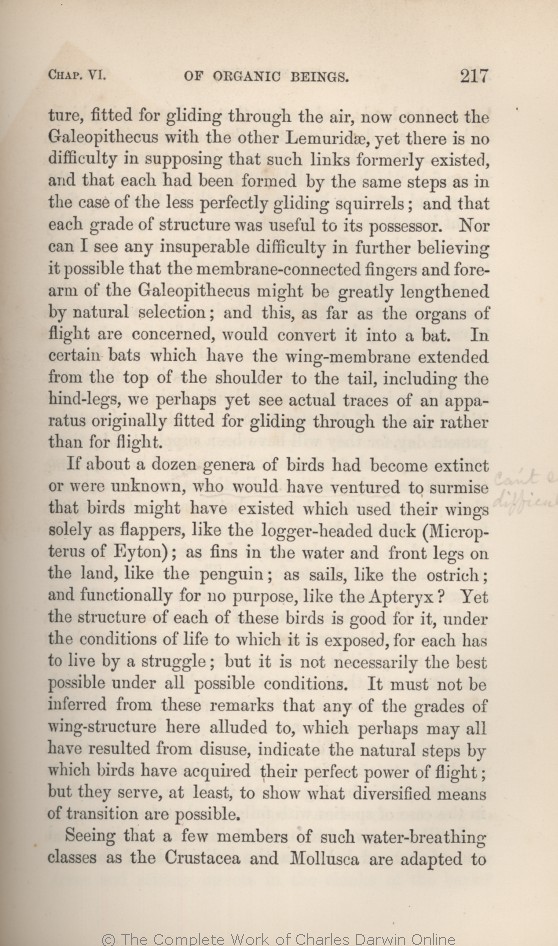fitted for gliding through the air, now connect the Galeopithecus with the other
Lemuridæ, | Lemuridæ, 1859 1860 1861 1866 1869 | | Insectivora, 1872 |
| there is 1869 1872 |
| I can see 1859 |
| I see 1860 1861 1866 |
| had been formed by 1859 1860 1861 1866 1869 |
| was developed in 1872 |
| steps 1859 1860 1861 1866 1869 | | manner 1872 |
| in 1859 1860 1861 1866 1869 | | with 1872 |
| case of the 1859 1860 1861 1866 1869 |
| OMIT 1872 |
| and that 1859 1860 1861 1866 1869 | and that 1872 |
| was 1860 1861 1866 1869 | | had been 1859 | | having been 1872 |
| it possible 1859 1860 1861 1866 1869 | it possible 1872 |
| membrane-connected 1859 1860 1861 1866 1869 | | membrane connected 1872 |
| forearm 1860 1861 1866 1869 | | fore-arm 1859 1872 |
| be 1859 1860 1861 1866 1869 | | have been 1872 |
| selection; 1859 1860 1861 1866 1869 | | selection. 1872 |
| convert it 1859 1860 1861 1866 1869 |
| have converted the animal 1872 |
| certain bats which have 1869 |
| bats which have 1859 1860 1861 1866 |
| certain bats in which 1872 |
| extended 1859 1860 1861 1866 1869 | | extends 1872 |
| tail, 1859 1860 1861 1866 1869 | | tail 1872 |
| including 1859 1860 1861 1866 1869 | | and includes 1872 |
| yet see actual 1869 |
| see 1859 1860 1861 1866 1872 |
| fitted 1869 1872 | | constructed 1859 1860 1861 1866 |
|
|
If about a dozen genera of birds
had | had 1859 1860 1861 1866 1869 | | were to 1872 |
| extinct 1859 1860 1861 1866 1869 | | extinct, 1872 |
| or were unknown, 1859 1860 1861 1866 1869 |
| OMIT 1872 |
| ..... 1861 1866 1869 1872 | | have 1859 1860 |
| surmise 1861 1866 1869 1872 | | surmised 1859 1860 |
| front legs 1859 1860 1861 1866 1869 | | as front-legs 1872 |
| Apteryx? 1861 1866 1869 1872 | | Apteryx. 1859 1860 |
| have resulted from 1859 1860 1861 1866 1869 |
| be the result of 1872 |
| natural 1859 1860 1861 1866 1869 | natural 1872 |
| have 1859 1860 1861 1866 1869 | | actually 1872 |
| serve, 1859 1860 1861 1866 1869 | | serve 1872 |
| at least, to show what diversified means of transition are 1859 1860 1861 1866 1869 |
| to show what diversified means of transition are at least 1872 |
|
|
| Seeing that a few members of such water-breathing classes as the Crustacea and Mollusca are adapted to
|









